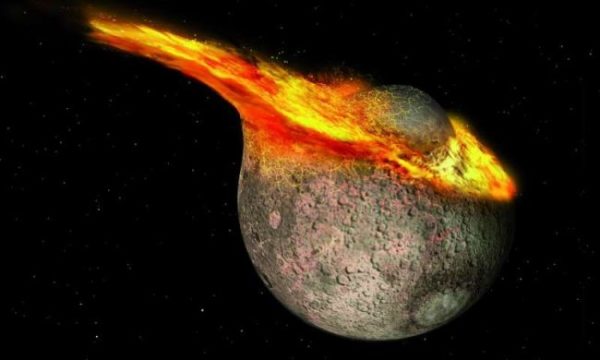age
What If… No One Reached 15?
Time for a new feature here on QSF. What If Wednesday. From Janet Gershen-Siegel: Let’s explore how things might be different if… What if 14 was suddenly the upper limit for human aging? Ground rules: Accept the premise. No griping that “it couldn’t happen” Share your thoughts on how it would change the world/society. Respond (kindly) to the thoughts of others FB Chat: http://bit.ly/1MvPABVMeWe ChatWhat: http://bit.ly/2mjg8lf
How Much Time Does the Human Race Have Left?
My advice to young scientists who seek a sense of purpose in their research is to engage in a topic that matters to society, such as moderating climate change, streamlining the development of vaccines, satisfying our energy or food needs, establishing a sustainable base in space or finding technological relics of alien civilizations. Broadly speaking, society funds science, and scientists should reciprocate by attending to the public’s interests. The most vital societal challenge is to extend the longevity of humanity. At a recent lecture to Harvard alumni I was asked how long I expect our technological civilization to survive. My … Read more
FOR WRITERS: The Age of Content
FOR WRITERS Today’s writer topic comes from QSFer Olivia Wylie: What age ranges do you usually include in your works? Why? Writers: This is a writer chat – you are welcome to share your own book/link, as long as it fits the chat, but please do so as part of a discussion about the topic. Join the chat: FB: http://bit.ly/1MvPABVMeWe: http://bit.ly/2mjg8lf
SPACE: The Moon’s Younger Than We Thought
It turns out the moon is a little younger than scientists previously thought — about 85 million years younger, to be precise. In a new study, researchers at the German Aerospace Center found out that, not only did the moon once have a massive, fiery magma ocean, but our rocky satellite also formed later than scientists previously expected. Billions of years ago, a Mars-size protoplanet smashed into the young Earth and, amid the debris and cosmic rubble, a new rocky body formed — our moon. In this new work, the researchers reconstructed the timeline of the moon’s formation. While scientists … Read more
How Old Is the Universe? Older Than Me (and You)
Ancient light from the Big Bang has revealed a precise new estimate for the universe’s age: 13.77 billion years, give or take 40 million years. The new estimate, based on data from an array of telescopes in the Chilean Atacama Desert, also weighs in on one of the most important disagreements in astrophysics: How fast is the universe expanding? Described in two scientific papers, the new result gives a significant boost to one side of the disagreement, though the physicists couldn’t prove the other side of the dispute wrong. Here’s the problem: Physicists need to understand the universe’s expansion rate … Read more
SCIENCE: There Are (At Least) Four Distinct Patterns of Aging
Some people’s hearts stay strong well into their 60s, but their kidneys begin to fail. Others may have the kidneys of a 30-year-old but fall victim to constant infection. Now, scientists may be one step closer to understanding why the aging process varies so drastically between people. Even within a single person, aging unfolds at different rates in different tissues, sometimes striking the liver before the heart or kidney, for example. People fall into distinct categories depending on which of their biological systems ages fastest, and someday, doctors could use this information to recommend specific lifestyle changes and design personalized … Read more
The Oldest Living Creature on Earth?
Chinese scientists say they have discovered a nearly 5-foot-long Giant Salamander in a cave in southwestern China which may be close to 200 years old, which would make it the oldest living creature on Earth (besting a tortoise, which is said to be 183). The creature, a species which is critically endangered, was transferred to a facility for observation. It’s unclear what affect removal from its natural habitat may have on its health, but our guess is not great. By Andy Towle – Full Story at Towleroad.com










